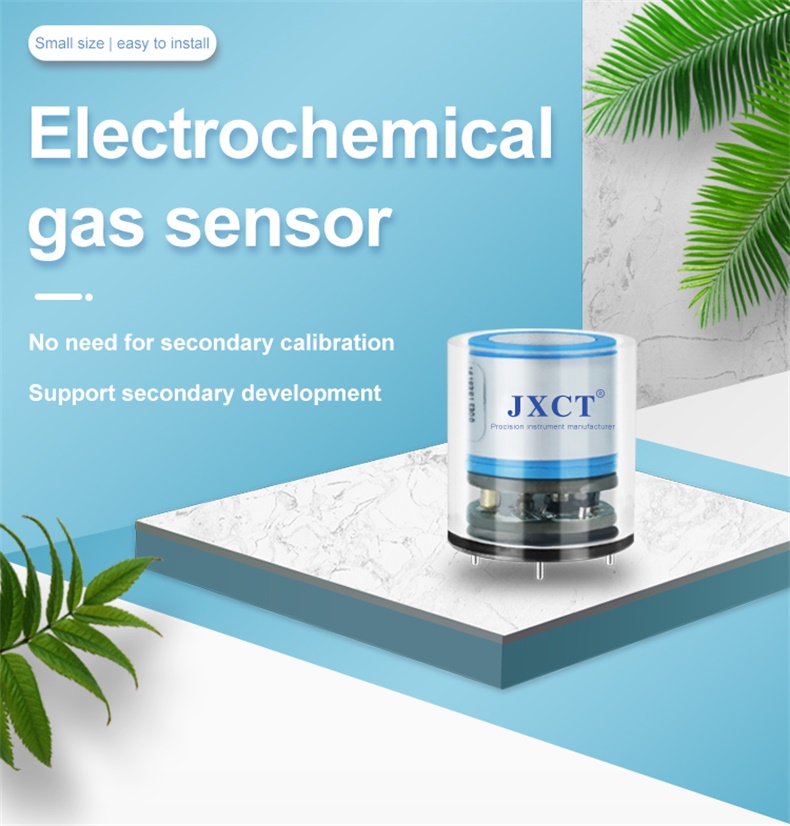Summary:
Carbon monoxide sensor are chemical sensors. Chemical sensors are mainly composed of two parts: conduction or conversion system. CO gas detection sensor based on CO gas detection. Can detect the concentration of hazardous gas CO exposed to the environment, and clearly read the gas concentration, peak and high and low concentration alarm levels. If the current gas high and low concentration exceeds the preset limit value, the alarm will alert the user through sound and light alarm.
According to the detection principle, current sensors for carbon monoxide detection are mainly divided into semiconductor type, electrochemical type, infrared type and catalytic combustion type. Their main working principle and advantages and disadvantages are analyzed as follows:
1, electrochemical type
When a fixed voltage is applied to the positive and negative electrodes of the electrolytic cell, the reaction takes place on the acting electrode and the opposite electrode respectively. Taking the electrochemical carbon monoxide sensor as an example, the reversible REDOX reaction always takes place between the working electrode and the opposite electrode, and the potential difference is generated between the electrodes. But because reactions at both electrodes polarize the electrodes, this makes it difficult to maintain a constant interelectrode potential and thus limits the range of carbon monoxide concentrations that can be detected.
The total reaction is the oxidation of carbon monoxide to carbon dioxide, the flow of electrons creates an external current, and the charge balance is accomplished by the flow of charge carriers in the electrolyte.
The biggest characteristic of the electrochemical gas sensor is that the current is completely proportional to the concentration of carbon monoxide, and the output signal has a good linear relationship with the concentration of gas, so the signal processing and display is very convenient. Another feature is that because the reaction is at room temperature, there is no need for a heater, so the voltage between electrodes can use dry batteries, no need for mains electricity, and portable carbon monoxide alarm.
Advantages: small size, zero power consumption, high sensitivity, good stability, good linearity, good repeatability, fast influence speed, resolution can generally reach 1ppm, long life.
Disadvantages: the price, performance, process, anti-interference performance, temperature and humidity changes between the brands are greatly different.

2, catalytic combustion type
The sensor has a pair of catalytic combustion detection elements where one element is very sensitive to carbon monoxide gas which is coated with a multi-layer catalyst and the other element is insensitive to compensate for ambient temperature changes. This pair of detection elements and another pair of high precision resistors form the Wheatstone bridge.
Advantages: accurate measurement, fast response, long service life.
Disadvantages: Flammable gas range, no selectivity. There is danger of ignition and explosion when working with dark fire. Most elemental organic vapors are toxic to sensors.
3, semiconductor type
The sensitivity of a semiconductor gas sensor to gas depends on the temperature at which the sensor is heated. In the case of semiconductor carbon monoxide sensors, the sensor is heated to a temperature below 100°C. This temperature is much lower than that of other gases such as butane, methane, hydrogen, ethanol vapor, etc. At such low temperatures, however, carbon monoxide’s response slows and its sensitivity is easily affected by water vapor in the atmosphere.
To solve this problem, the sensor is heated alternately from high temperature to low temperature, during which water vapor and other mixed gases are removed from the sensor surface. During low temperature, the sensor can detect carbon monoxide well with excellent sensitivity and reproducibility.
Advantages: cheap price, excellent performance.
Disadvantages: High power consumption, not suitable for battery power supply, easy to be affected by temperature, humidity, air flow, poor cross-interference resistance, high false alarm rate.
4, infrared
The infrared carbon monoxide sensor detects the principle that molecules composed of two different atoms have a so-called dipole moment (the product of the length of the dipole and the amount of charge on the upper end of the dipole). When the gas is irradiated with infrared light, it will absorb the specific wavelength of light determined by the structure of the gas molecule.

The absorption wavelength of the absorption spectrum can determine the type of gas, and the concentration of the gas can be determined from the absorption intensity. This sensor sensitivity, selectivity, especially precision is very high, often used in meters, but its complex structure, high cost, rarely used in the alarm.
Advantages: wide range, high precision, good selectivity, high reliability, no adsorption effect, not toxic, not dependent on oxygen, less environmental interference factors, long life.
Disadvantages: high price, large maintenance difficulty, large volume is not suitable for the use of portable instruments, low concentration detection accuracy to be improved, not suitable for long-term power supply.